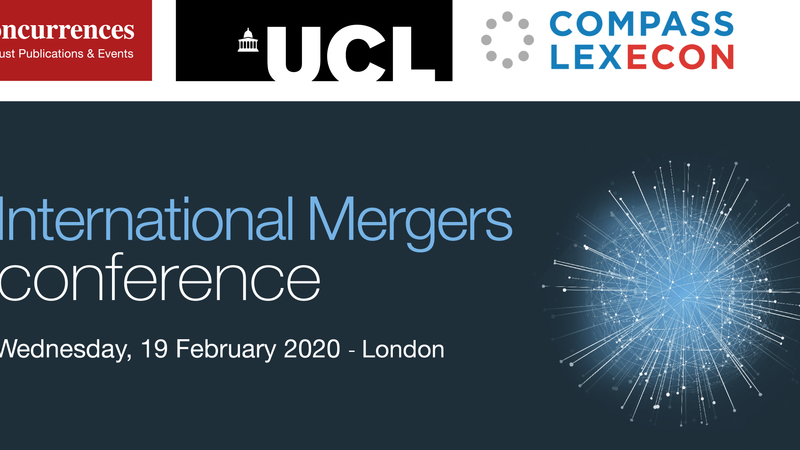The As-Efficient Competitor Test and Principle. What Role in the Proposed Guidelines?

Share
Senior Consultant, Damien Neven, authored a paper for the Journal of European Competition Law & Practice, discussing the ‘as-efficient’ principle and test, their implementation and amendments from economic and enforcement perspectives and the role that they could play in proposed guidelines.
Introduction
The guidance paper on the priorities for enforcement of Art. 1021 states that, in relation to price-based conduct, the Commission would normally only intervene if a given conduct was capable of harming as-efficient competitors.2 The foreclosure of as-efficient competitors is thus seen as a criteria for identifying anti-competitive foreclosure, or foreclosure leading to anti-competitive effects warranting intervention. The guidance paper also describes the ‘as-efficient competitor test’, which takes cost as a metric for efficiency, as a piece of evidence that would be informative in assessing whether a given conduct was capable of harming as-efficient competitors.3 A number of Commission decisions since the adoption of the guidance paper have referred to the principle and have deployed the test, and some of these decisions have been reviewed by European Courts. In March of this year, the Commission adopted an amendment of the guidance paper,4 which reformulates the principles and changes the scope of the enforcement of the test, with the objective of bringing the guidance paper in line with what the Commission sees as insights from Court judgments.
Key Points
- The amendment of the guidance paper, which removes the soft safe harbor for a conduct that does not foreclose as efficient competitors, has led to greater consistency with Court judgments.
- The assessment of the implementation of the test by the General Court fails to recognize the margin of error that is inherent in the implementation of the test.
- The as efficient competitor principle and the inference that can be drawn from the test should be contingent on the theory of harm being investigated.
- Relying solely on the as efficient competitor principle would lead to under enforcement, in particular regarding competition softening.
The objective of this paper is to discuss both the principle and the test, as well as their implementation and amendments, from economic and enforcement perspectives and assess the role that they could play in proposed guidelines. We first consider the ‘as- efficient competitor principle’ in enforcement. We take the Commission’s guidance paper as a reference and discuss (a selection of) recent Court decisions in relation to the guidance paper as well as its recent amendment. We find a thread in Court judgments that recognises that (i) the ultimate objective of enforcement is to protect consumer welfare, (ii) that a conduct leading to the foreclosure of a competitor5 is not necessarily abusive and might involve competition on the merit against a less efficient competitor, that (iii) a sufficient condition for a conduct to be characterised as abusive (and thereby involving anti-competitive foreclosure) is that it leads to the foreclosure of as-efficient competitors, and that (iv) a conduct can be abusive even it does not lead to the foreclosure of as-efficient competitors as less efficient competitors might also exercise a significant competitive constraint. These principles are such that the as-efficient competitor principle is used as a red line and such that the foreclosure of less efficient competitors can be either abusive or consistent with competition on the merits. These principles are generally consistent with the original formulation of the guidance paper, except regarding the significance that the guidance paper attaches to the as-efficient test as a soft safe harbour for conducts that do not foreclose as-efficient competitors. The foreclosure of an as-efficient competitor, which is a sufficient but not a necessary condition, is thus only one sufficient condition to characterise a conduct as abusive; that is, it is, in principle, possible to find an abuse even when only less efficient competitors are foreclosed or indeed when neither efficient nor less efficient firms are foreclosed.
One of the amendments adopted by the Commission effectively removes the soft safe harbour for conducts that do not foreclose as-efficient competitors. This, at least according to our review (and the Commission’s motivation for the amendment), contributes to greater consistency with the Court judgments. There is, however, also another amendment that is not helpful as it might reduce the discipline that the Commission imposes on itself. The Commission has chosen to adopt language from recent judgments that make renewed reference to the effect of the conduct of the dominant firm on the competitive structure as a criteria to assess its abusive character. This term is ill-defined, and the suspicion may arise that it could be used as a shortcut to avoid the analysis of anti-competitive effects. In its commentary on the amendments,6 the Commission (or at least a group of officials) also expresses concerns that the assessment of effects imposes such a burden that it might lead to under enforcement (or type II errors)7 and welcomes a potential relaxation of the disciplines to define a counterfactual. The fact that, in its commentary, the Commission has chosen to signal this, is a source of concern, as the delineation of a counterfactual is arguably one of the most fundamental disciplines in the assessment of effects.
The second part of the paper focuses on the implementation of the test in enforcement. More specifically, we find that there is some confusion in decisions and court judgments over two dimensions of the interpretation of the test; first, there is no clear articulation of whether the test attempts to assess whether, when competitors are equally efficient, the conduct of the dominant firm involves a sacrifice for the dominant firm, relative to a counterfactual, or whether the test attempts to assess whether an equally efficient competitor could not profitably compete in response to the conduct of the dominant firm. Second, there is occasional confusion over whether the test refers to a hypothetical competitor, or an actual competitor and whether inferences should be drawn from the likely absence of equally efficient competitors in particular circumstances. We also find that significant issues arise with respect to the inferences that can be drawn (or not) from particular implementations of an as-efficient test. In particular, the discussion by the General Court of the as-efficient competitor test implemented by the Commission in the Intel case8 fails to recognise the margin of errors that is inherent in the implementation of the test. What should be considered from a methodological perspective is the confidence interval around the point estimate of the difference between cost and effective price rather than the point estimate itself. The explicit recognition of margins of errors also has implications for the aggregation of evidence over time and the consolidation of different pieces of evidence.
The third part of the paper assesses the as-efficient competitor principle, and associated tests, from an economic perspective and asks whether it is appropriate to use the principle, as currently being used, in terms of defining a red line. From an economic perspective, there is a general concern that the principle is not derived from any particular theory of harm. Whether evidence that an equally efficient firm is foreclosed is revealing of the presence anti-competitive effects and whether the absence of foreclosure is revealing of the absence of anti-competitive effects can only be assessed in the context of a particular theory. We illustrate this for a number of theories of harm. We show, for instance, that using the as-efficient competitor principle as a red line might lead to overenforcement (or type I errors) in the context of particular theories of harm involving the appropriation of rents from downstream competitors (in the context of margin squeeze) or the demand boost theory of exclusivity discounts. We also show that with some particular theories, the as-efficient competitor principle could be used as a safe harbour without inducing significant underenforcement (or type II errors) but that with respect to other theories, it would involve significant type II errors. Hence, a clear recommendation for the future guidelines would be to make the use of the as-efficient competitor principle (and associated test) as well as inferences that can be made from it, contingent on the particular theory of harm being investigated.
This article was originally published by the Journal of European Competition Law & Practice here. The views expressed in this paper are the sole responsibility of the author and cannot be attributed to Compass Lexecon or any other parties.
Damien J Neven, The As-Efficient Competitor Test and Principle. What Role in the Proposed Guidelines?, Journal of European Competition Law & Practice, 2023;, lpad063, https://doi.org/10.1093/jeclap/lpad063
- Guidance on the Commission’s enforcement priorities in applying Article 82 of the EC Treaty to abusive exclusionary conduct by dominant undertakings [2009] OJ C45/7. ↩︎
- Ibid., para 23. ↩︎
- Ibid., paras 23–27, as well as more detailed discussions in relation to particular conducts (see, e.g. paras 41–45 with respect to retroactive rebates). ↩︎
- Amendments to the Communication from the Commission—Guidance on the Commission’s enforcement priorities in applying Article 82 of the EC Treaty to abusive exclusionary conduct by dominant undertakings [2023] OJ C116/1. ↩︎
- Note that foreclosure, as understood in the Guidance Paper and the case law, can be partial (and might thus not involve the exit of the competitor concerned). ↩︎
- Linsey McCallum and others, ‘A dynamic and workable effects-based approach to abuse of dominance’ Competition Policy Brief (March 2023), available at https://ec.europa.eu/competition-policy/publications_en. ↩︎
- Ibid., page 4, under title III. ↩︎
- Case T-286/09 RENV Intel Corporation Inc. v Commission, EU: T: 2022: 19. ↩︎


